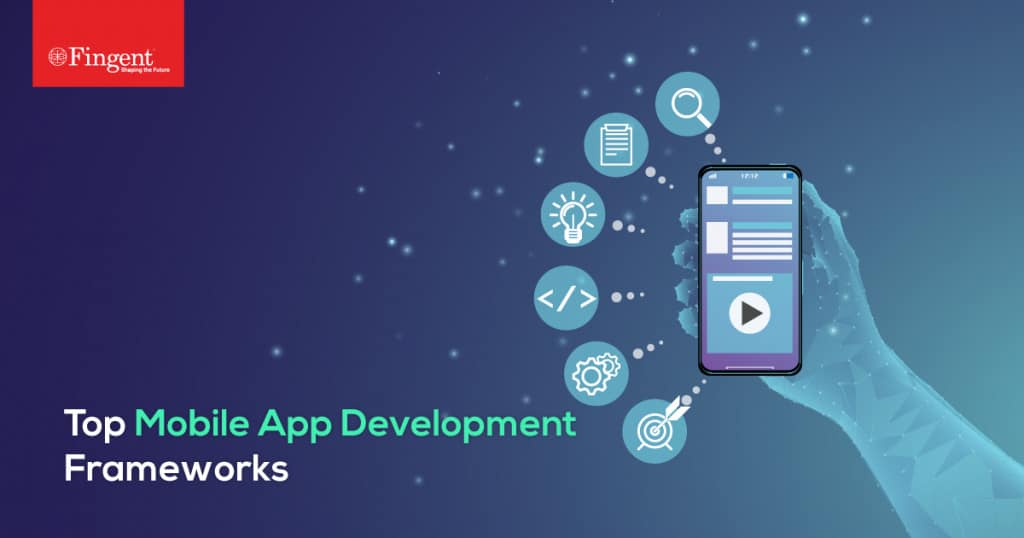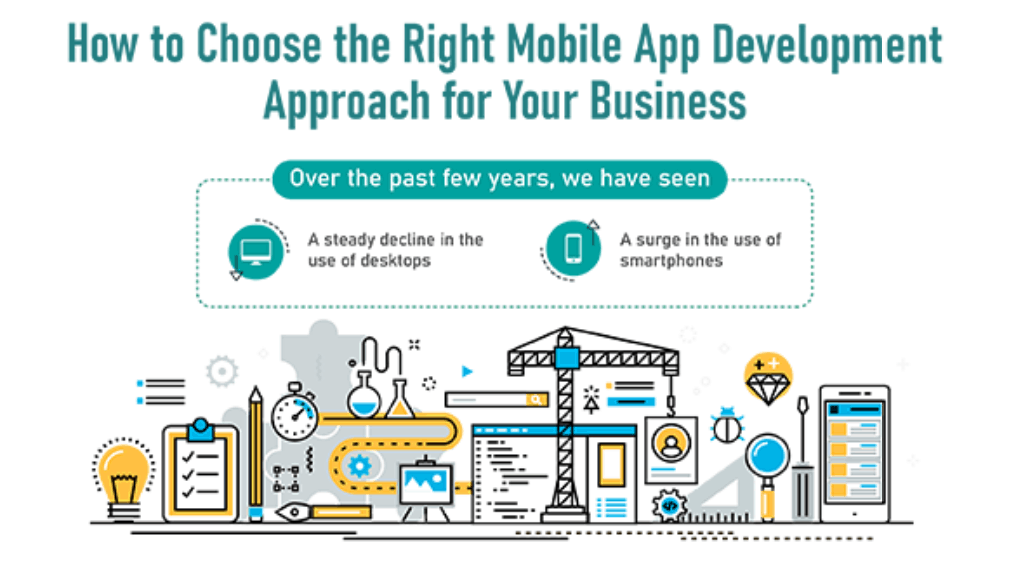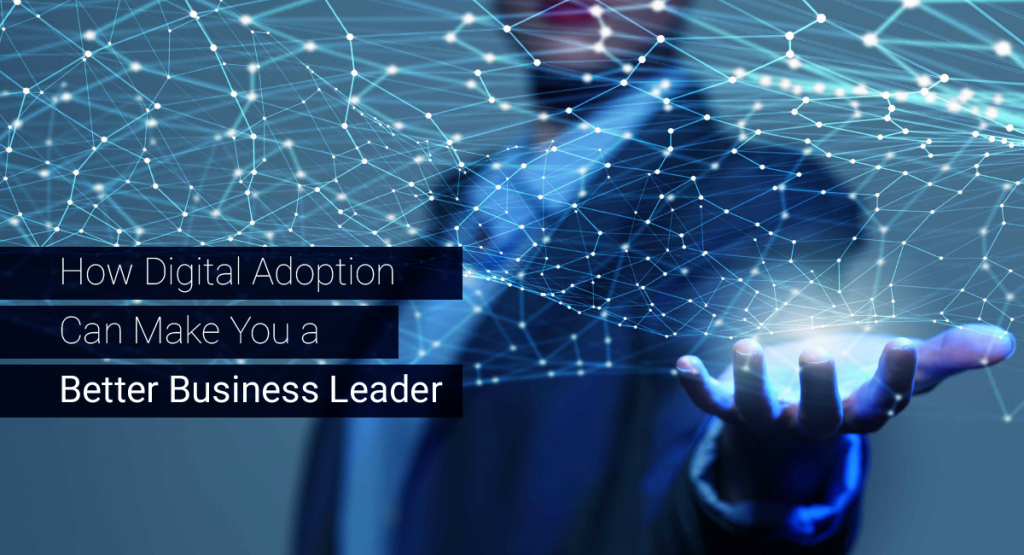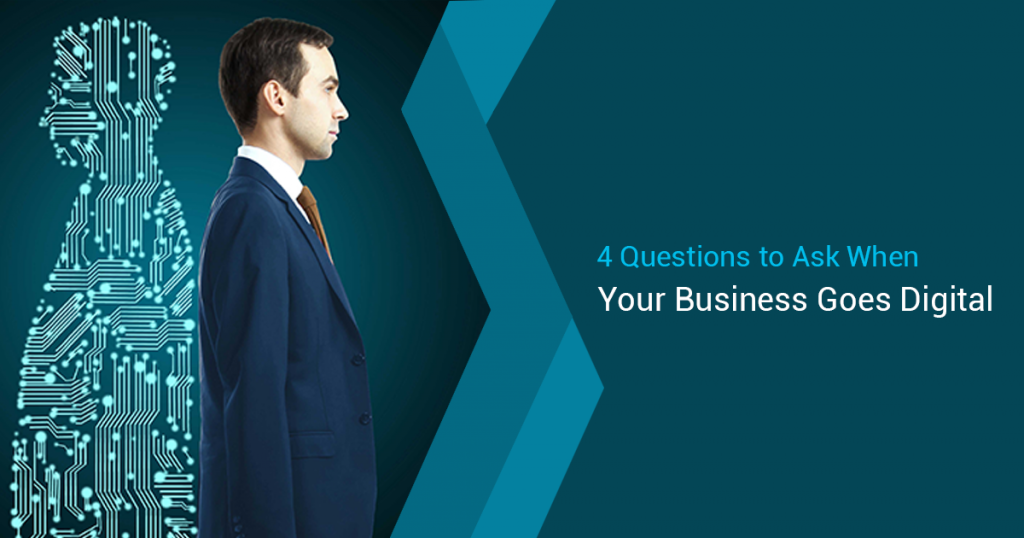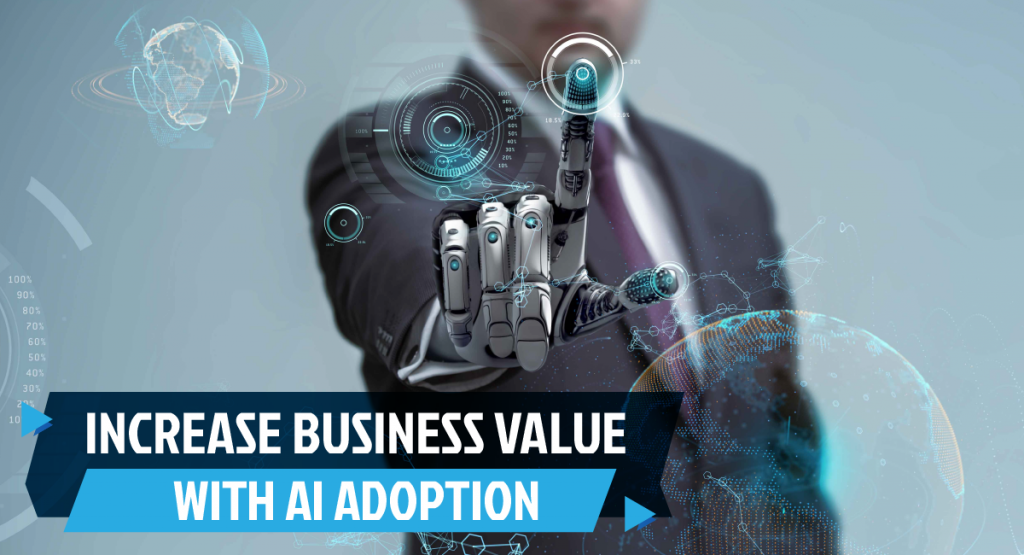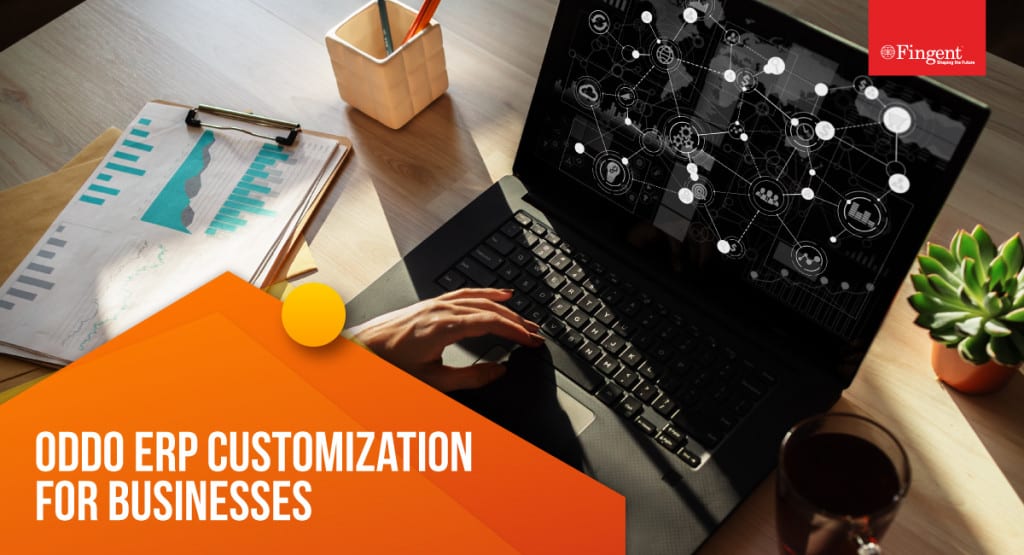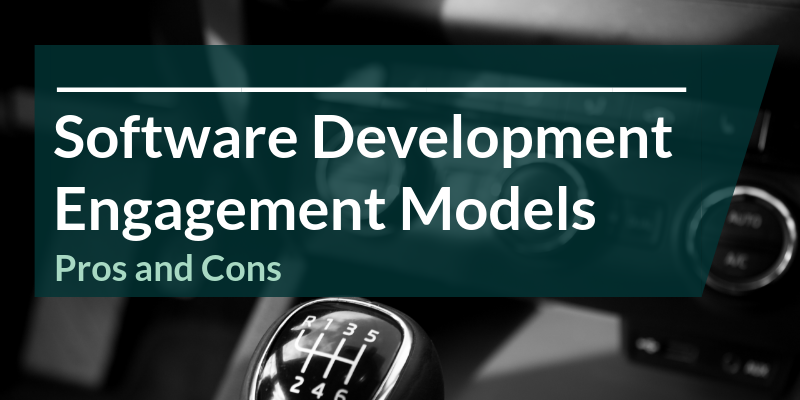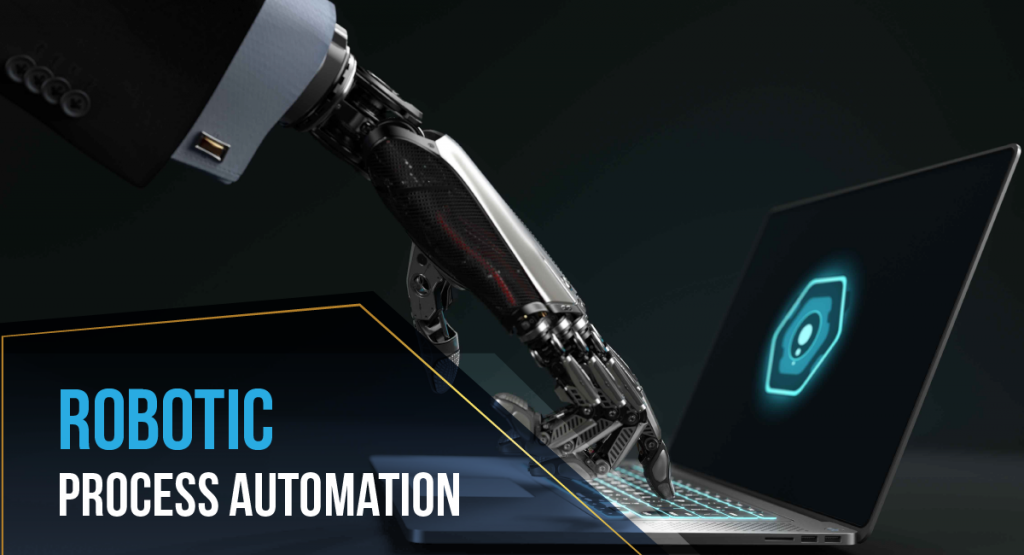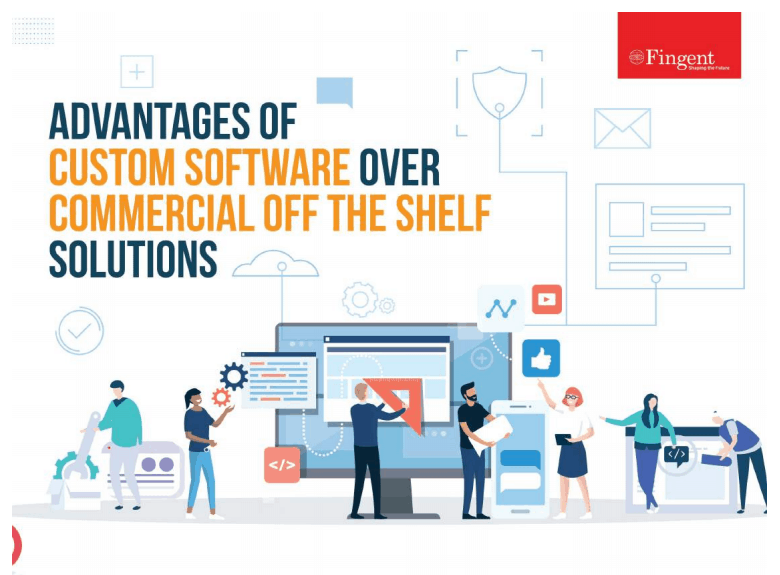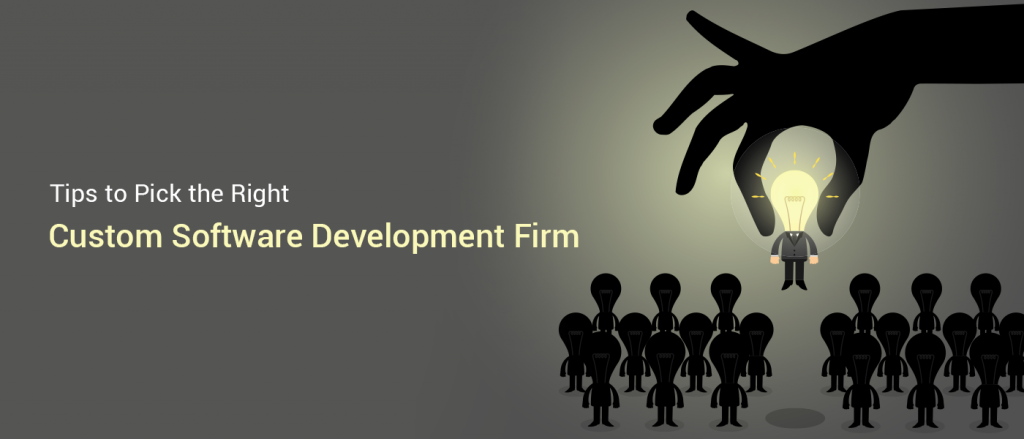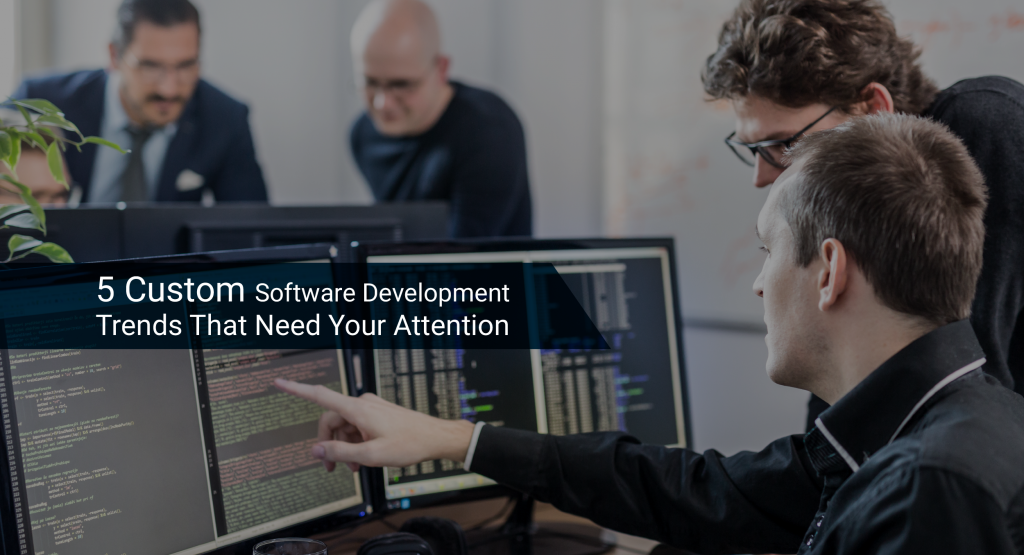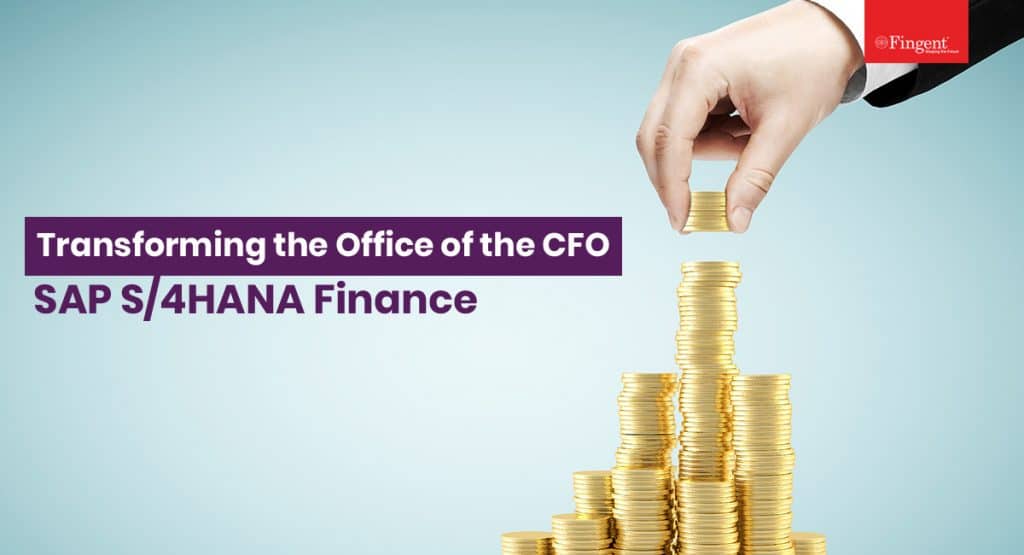Category: Business
How can companies step up their game and deliver the COVID-19 vaccine efficiently?
The COVID-19 vaccines have received Emergency Use Authorization in the United Kingdom, the United States, Canada, the EU, and a few other countries. Many frontline workers and even the priority population have already received their first doses. Vaccines from several major global manufacturers like India are also set to arrive and be distributed for administration globally.
However, in certain places, the vaccine effort has hit a few roadblocks. Deployment to vulnerable countries and the at-risk group is also slow. As the COVID-19 vaccine is being made available, supplying the doses efficiently with utmost care will be the ultimate logistics challenge. Massive volumes have to be handled, stored through cold chains, and distributed. All processes need to comply with safety regulations. In other words, the vaccines should be distributed quickly and safely worldwide.
In the United States, several organizations play a crucial role in vaccine deployment by adapting their operations to meet the demands. Suppliers, manufacturers, and regulators are stepping up the production of vaccines. Additionally, several thousands of medical, pharmacy staff, frontline workers, and vaccine handlers attend training sessions to understand the peculiarities of different manufacturers’ specific vaccines.
Here, we have discussed seven steps that organizations must engage in to ensure the safe delivery of the COVID-19 vaccine. Following these steps can boost the productivity of your logistics business and efficiency on your future orders and deliveries.
Read more: 6 Tips for Logistics and Supply Chain Leaders to Plan COVID-19 Vaccine Distribution Strategies
1. Ensure raw-materials supplies
Vaccine producers can partner with global suppliers of raw materials and provide support to create redundancies wherever needed in the supply chain. Last year, many manufacturers established new partnerships. However, a wide diversity of suppliers is necessary to meet the demands of each vaccine seeking approval. Manufacturers can negotiate contracts and offer incentives to suppliers who invest in boosting production and stocking-up the goods. Also, producers can evaluate their inventory management and check for stock-outs of essential raw materials.
2. Collaborate with the government
In addition to the above point, the producers must have sufficient interaction with the government to increase production and maintain it. Many manufacturers and suppliers are working closely with the government to manage natural resource allocation. This collaboration must be continued over the economic and public health implications of outsourcing legacy products and optimize production lines for COVID-19 vaccines. Additionally, producers can collaborate with the government to create technology-transfer timelines and develop innovative ways to push bulk volumes to the market. It also helps improve inventory management and distribution.
3. Boost manufacturing by adhering to quality guidelines
As producers need to ramp-up operations in new or existing manufacturing facilities, they could look for opportunities to accelerate the process. Companies can use several digital and analytics tools to expand capacity and scale faster. Additionally, they can accelerate technology transfer time. For example, companies grow and speed up production by conducting engineering runs, validation runs, and stability studies simultaneously.
By collaborating with regulators and manufacturers, authorities can ensure that they meet the established and newly issued guidelines related to the dosage quality and procedures. With such coordination and understanding, higher throughput can be achieved. Similarly, stakeholders can collaborate and employ novel technology platforms such as mRNA to establish new vaccine production standards. Creating best practices at the facilities and the production can help set a clear road map for new manufacturing facilities. Eventually, this can improve future production capacity and throughput while meeting all the quality standards.
4. Optimize cold chain logistics
To mitigate distribution risks, manufacturers and distributors must identify failure points and create redundancies at each stage. For instance, dry ice can be used in warehouses fitted with freezers to deal with power loss or machine malfunctions. So, sources of dry ice must be identified across the distribution routes to restock coolers as required.
Reporting systems can be set up to identify supply-chain disruption events whenever they occur, using the data for refining best practices and procedures to avoid more losses.
In case there is a drop in the vaccine demand to the point that they are not immediately consumed, vaccine inventories must be redistributed to locations with higher demand. Manufacturers and distributors must avoid too much stockpiling to maintain the cold chain and reduce risks to the receiving administration location. If this is not possible in some areas, long-term storage by replenishing dry ice or increasing freezer capacity can be considered.
5. Address labor shortage
Currently, many locations are relying on hospitals and primary-care sites alongside retail pharmacies for vaccine administration. However, as vaccines will be deployed to the general public, more vaccine administrators will be needed. So, deploying the vaccines to larger and streamlined sites will be more efficient. This will improve patient safety, utilization of labor, and speed of vaccination.
Read more: How SAP Helps Realize Voice-enabled Warehouse Operations
6. Reduce spoilage at “care-points”
Manufacturers, distributors, and companies can collaborate to create ways to identify and track instances of spoilage. They can achieve this with proper guidance, training, certification, and optimization of doses.
As vaccines will be deployed to broader populations, accelerating the first-dose allocation as scheduled will be of paramount importance.
A possible way to prevent second doses from spoiling is to ask the vaccine recipient to commit to a second dose appointment at their point of care before administering the first dose.
7. Plan to overcome IT challenges
COVID-19 stakeholders must identify IT systems and assess their ability to perform at scale. They must also agree upon standard requirements and processes to generate and share threat intelligence. Awareness of attacks on the vaccines will lower the chances of seizures in number and magnitude.
Additionally, manufacturers and distributors can commission systems to track if the vaccine recipient has demonstrated immunity. This will not only build confidence in immunity but help people have a recognizable and accepted way of certifying that they have been vaccinated. This is true, especially if it will release them from travel limits and other pandemic-related restrictions.
Read more: How to Pick the Right Logistics Management Software
The organizations involved in the deployment of vaccines are not solely responsible for managing it across the common operating model. The risks can be reduced to a great extent with increased cooperation from stakeholders. So, working groups could get together to identify the risks, assess their impact, and determine if certain risks are evolving and how they can be addressed.
Building smart and custom logistics software applications can help fulfill the increasing demand for last-mile delivery. Fingent helps build healthy tech partnership ecosystems to ensure uninterrupted supply and distribution of your products and services. It is the right opportunity to look at the future of logistics and decide whether to continue on the pre-COVID trajectory or change course. To see how our custom logistics software solutions can improve your team’s productivity, get in touch with us.
Stay up to date on what's new

Featured Blogs
Stay up to date on
what's new



Talk To Our Experts
Mobile application development is the #1 priority for businesses and enterprises in 2022. Are you well-equipped to plan your requirements and develop a robust business mobile app?
Mobile app development in 2022: Practices you should follow
As consumer behavior continues to evolve, more and more businesses adapt their strategy to earn customer satisfaction. With the increased public usage of smartphones, e-commerce and mobile backing experience a significant boom. A mobile app is essential for running a business successfully, and its significance has been more than ever before.
A mobile app is not just a mobile version of your website but is a crucial engagement and experience-driven environment needed for a cohesive customer journey. A mobile app can help build a strong mobile presence and attract a large audience towards your services or products.
According to a survey, by 2022, there will be around 7 billion mobile users worldwide, and by 2022, it is estimated that the annual mobile app downloads will reach 258 billion.
According to the ContractIQ survey, roughly 62% of businesses already have an app or are in the process of developing one. 50% of these businesses use their apps for support and engagement, 30% for revenue generation, and 20% for branding. Many companies are investing in mobile apps as they help generate new or expand an existing business.
With many countries still under lockdown and others following social distancing, the demand for apps such as digital payments, groceries, and entertainment has increased tremendously. Many enterprises and businesses have resorted to digital platforms and are reaping their benefits.
Here, we have discussed the importance of investing in mobile apps for your business and how it can boost your business growth even during a pandemic.
Why invest in mobile apps?
With more people turning to mobile apps to interact with brands, businesses’ mobile presence has become necessary.
In general, mobile apps help boost sales, provide a better customer experience and become more competitive.
According to a research by Clutch, two main reasons by which mobile apps facilitate business growth are:
- Improving customer service
- Providing a return on investment
Read more: Mobile App Development: 4 Tips To Consider
Five ways mobile apps benefit your business
1. Adds value to your customers
Customer engagement is the most significant aspect of customer relations, interactions, and transactions. When someone looks for your product or service, it’s essential to keep the person engaged.
You will have to increase your interaction with the customers for better promotion of sales.
So how does a mobile app fit in here? Starbucks’ mobile app is the best example of successful digital engagement that’s both innovative and inviting. Its user-friendly mobile experience, engaging loyalty program, mobile pay and ordering, and integration with other platforms and services make the coffee chain a customer experience leader.
To put it simply, a mobile app like Starbucks can offer an outstanding and engaging digital experience to customers.
2. Boosts brand building
In the past, brands used to advertise their services through posters, calendars, refrigerator magnets, billboards, and hoardings. Companies imprint their brand logos on such mementos to increase their visibility.
Today, a mobile app is capable of replacing all these. A mobile application can promote brand awareness and recognition among customers and be an effective communication channel. By regularly interacting with your target audience through the mobile app, you can earn customer trust.
Customized mobile apps help educate your customers about your brand and engage them effectively. The more they listen to you and your sales pitches, the more they will commit to your brand.
Read more: Top Technologies Used to Develop Mobile Apps
3. Increases sales
You can incorporate different loyalty programs into your mobile app. It will make your customers revisit your store (digital/ physical) and spend more time. Offering rewards in tiered layers allow customers to earn better incentives as they move from one level to another. It will help boost brand recognition.
Gamification is another way by which you can reward winning customers and provide discounts and prices to pre-defined activities such as sharing pictures or a notification. Scratch-and-win is another feature that can help raise engagement among users. It can work well for both customers and vendors.
4. Improves efficiency
Integrated shopping carts with food ordering and scheduling allow the business to house these functionalities like a digital footprint within the app. For instance, if an eatery incorporates an online food ordering system within its app, it will more likely see a significant increase in online and in-app ordering. Similarly, if a retail business collaborates with an e-commerce system, it will see a productivity improvement and eventually overall sales. With mobile apps, companies can enhance user engagement with inbuilt scheduling software that notifies users about the schedule.
5. Build a loyal customer base
Having a loyal customer base is very critical for any business. A mobile app is one of the best ways to engage with customers and create a loyal customer base. An app allows customers to interact with your business at their convenience. With referral programs, you can encourage your clients to refer your products or services to others.
If you are not convinced with the above points, here are a few more reasons to consider incorporating mobile apps into your business strategy.
- Notify users about your new offers and products
- Reach out to younger audiences
- Sync email and social media accounts of users
- Stay ahead of the competition
View infographic: All you need to know before selecting a mobile app development method
Consider a few things before getting started
Planning your mobile app
Before developing your mobile app, you must plan. You need to outline details like objectives, budget, specifications, and scope. Get a clear picture of your app before sending it to a mobile app developer so that you can be quoted accurately, reasonably, and realistically.
Choose the right developer
We may sound a little biased here. However, we need to say that we’re helping brands worldwide to realize their visions w.r.t. their mobile apps. We provide consistent, high-quality, and cost-effective results with robust, agile teams and dedicated QA practices. Our experts can help you identify your requirements precisely, select the technology and framework needed to build your app, customize the app according to your requirements, and update and maintain it regularly.
Watch video: Fingent can help you choose the right mobile app development approach by evaluating your requirements.
If you’re not sure how or where to start with your enterprise or business mobile app, we’re here to help. Fingent’s mobile app development team has curated an app specification template that is simple and straightforward. Please fill out this template and share it with us. Our expert will get back to you with the answers.
Alternatively, you can send us your requirements and queries by clicking here.
Stay up to date on what's new

Featured Blogs
Stay up to date on
what's new



Talk To Our Experts
Medical Virtual Reality offers excellent opportunities for healthcare providers, practitioners, researchers, residents, patients, and chemists. Here’s a brief overview.
Virtual Reality: Increasing success rate and establishing trust in medical education
In 2013, the World Health Organization (WHO) estimated a shortage of approximately 7.2 million health care professionals worldwide. The report also stated that this shortage is expected to reach 12.9 million by 2035. Besides the deficiency and disproportionate distribution of healthcare workers, the inadequacy of training programs also affects the delivery of uniform healthcare services worldwide. Leading healthcare organizations have been focusing on developing strategies that can increase the number of healthcare workers and enhance the quality and relevance of medical training.
In recent years, several modes of eLearning have been used to disseminate information and impart training to medical students, out of which Virtual Reality Applications deserve a special mention. Virtual Reality Environments (VREs) allow users to experience real-life scenarios via simulated counterparts and gain practical knowledge that would otherwise be difficult to comprehend in a real environment.
Read more: Is Mixed Reality the Future of the Healthcare Industry?
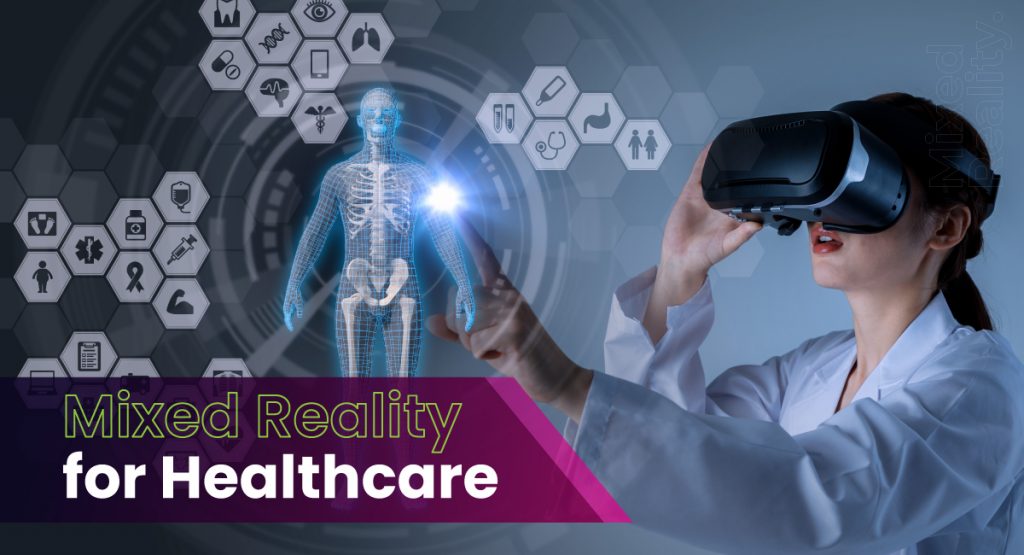
Here are a few examples of how VR improves medical education standards and how it enables novice medical personnel to learn concepts in environments that replicate real-life scenarios.
1. Reduce stress and anxiety among medical students
Medical and traumatic emergencies can be daunting and stressful, especially for the early-career medical personnel. Preparing novice doctors to respond effectively to medical emergencies before being confronted with a real scenario is challenging. Unnatural or high-cost training modalities fail to replicate the stress and gravity of real-world trauma management realistically. Immersive virtual reality (IVR) may provide a unique training solution.
VR-based medical training recipients report better learning of anatomical positions, reduction in surgery time in the real environment, increase in the safety of both physician and patient, positive psychological effects on learners, reduction in training costs and efforts, and overall improvement. 68% of nursing and 58% of medical interns reported that VR-based training has significantly reduced their anxiety about occupational needlestick or sharp injuries (NSI) prevention.
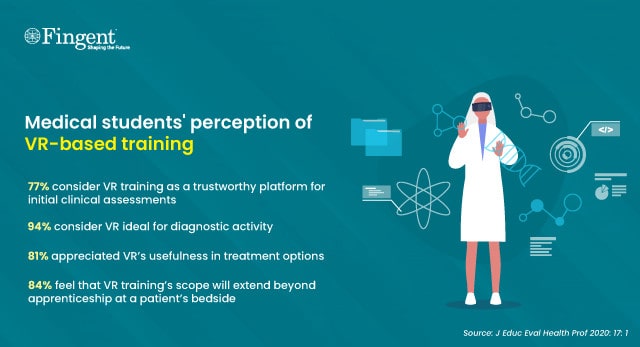
2. Ensure uninterrupted in-hospital training
During April-July 2020, when most countries went to stringent lockdown measures to curb the spread of the coronavirus, several medical colleges and universities adopted virtual reality to supplement the traditional in-hospital medical training. Due to in-hospital access bans, the training providers offered students virtual patient-based training, debriefing, and simulated clinical scenarios on a case-by-case basis, all via virtual reality environments.
A recent report on students’ perception of VR-based medical training found that:
- 77% of medical students considered VR training to be a trustworthy platform for initial clinical assessments
- 94% remarked that VR is ideal for diagnostic activity, and 81% appreciated its usefulness in treatment options
- Furthermore, 84% of students felt that the scope of VR training would move beyond apprenticeship at a patient’s bedside
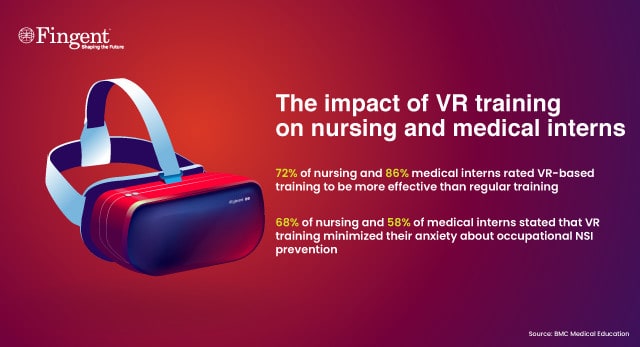
3. Immersive VR environments help develop empathy
The most significant advantage of virtual reality is that it allows users to experience any situation from any perspective. In that way, it can be called the “ultimate empathy machine.” Patients suffering from traumas such as memory loss, physical or mental abuse, age-related health issues, Alzheimer’s disease, drug addiction, and other ordeals need a soothing atmosphere and reassuring words to recover quickly. Immersive VR training is an effective teaching method to help medical students develop empathy towards such patients.
An educational project conducted by the University of New England (UNE) successfully used VR to teach empathy to medical and health profession students. The project used a VR tool called “Alfred Lab app” – to teach students about macular degeneration and hearing loss from a 74-year-old African American man’s perspective. Realizing an aged and ailing patient’s thoughts and concerns enables the residents to develop empathy towards such patients.
4. Improve practitioners’ skills, speed, and mobility in operating rooms
From rote memorization of theories, the modern medical training practice has evolved to imparting skills in life-like environments using virtual reality simulations. Even in the absence of faculty, VR systems enable students to learn practical surgical concepts when faced with a given patient. VR systems make medical training access more broad-based and flexible. Medical professionals can use VR to visualize the human body’s interior and learn better about human anatomy.
According to a study published by the Journal of Advances in Medical Education & Professionalism, the American Board of Internal Medicine (ABIM) has proclaimed that residents need to be trained by simulation tools before attempting any patient interventions in real life. The board also finds immersive VR training to be effective in mechanical ventilation and invasive hemodynamic monitoring.
Dr. Dimitris Stefanidis, professor and research scholar at Indiana University School of Medicine, concluded in a study that surgical residents who underwent training in laparoscopic suture using video simulators had reported improved operative performance, speed, and mobility at the end of the practice. Performing surgeries that require vast experience and sensitivity, such as an osteotomy (bone-cut surgery), can be simplified for surgeons through virtual simulations. Immersive simulations along with tactical feedback are safer and cost-effective than traditional teaching methods.
5. Impart health education and awareness among patients
In addition to practitioners, patients also can gain awareness of their medical conditions and treatment principles using VR. Clinical professionals can use simulated environments to communicate the impact of unpleasant lifestyle practices such as noxious drug usage, metabolic dysfunctions, obesity, growth of certain tumors, the effect of smoking and drinking on lung and liver functions, etc.
Chronically ailing and hospitalized patients can use VR goggles or headsets to experience their home in an immersive environment and chat with their family members. By installing a 360-degree camera in their home, the patient’s family can make sure that the patient experiences the interaction just like how he/she used to feel it while at home. During the COVID-19 pandemic, VR was highly applied in remote sites to facilitate telemedicine, control the spread of infection, plan, treat, and provide proper awareness to people regarding this disease.
Read more: The Application and Impact of Information Technology in Healthcare
Getting started with VR
Medical VR is no more a sci-fiction. VR-trained surgeons report a 230% boost in their overall performance compared to their traditionally-trained counterparts.
VR can help you conduct engaging medical conferences, help women get through labor pain, train surgeons and medical residents, reduce pain and anxiety among patients, and expedite recovery in physical therapy by tailoring exercises to patients’ therapeutic needs.
If your next question is how to start with VR, Fingent helps you develop these virtual simulators:
- ACLS (Advanced Cardiac Life Support System)
- Accident Trauma Care Standard Operating Procedures
- Orthopedic or Cardiac surgical procedure that involves using complex tools
- Neo-Natal Resuscitation Simulator (GOLDEN MINUTE PROTOCOL)
Would you like to discuss that with our expert? Drop us a line, and a member of our team will get back to you shortly.
Stay up to date on what's new

Featured Blogs
Stay up to date on
what's new



Talk To Our Experts
What comes under the scope of digital transformation? How does it differ from digitization and digitalization?
Digital Transformation vs. Digitization vs. Digitalization: Decoding the Concepts
The term digital transformation captivates every enterprise leader. Given the hype from software vendors and analysts, it’s hard to find an enterprise technology today that doesn’t self-endorse as a critical component of digital transformation.
While everyone seems to agree that digital transformation involves employing technology to accomplish business goals, there are differences of opinion among companies on what digital transformation is and isn’t. For a few, it means getting into e-commerce or moving into a cloud database. Some consider digital transformation as the adoption of advanced technologies like the Internet of Things or Artificial Intelligence to become more competitive.
Read more: Why Business Leaders Must Embrace Digital Adoption
With a lot of uncertainty prevailing on digital transformation’s scope and purpose, let’s take a closer look at what digital transformation means and not.
Digitization, digitalization, and digital transformation: Don’t confuse them
An excellent example of digitization is the conversion of paper-based forms and documents into electronic spreadsheets. Digitization enables businesses to cut costs to become more efficient. However, that’s the only competitive advantage it offers, either getting better or cheaper. Exactly what Microsoft Office did during its initial days by helping us compose and save documents easily.
With Big Data, Cloud Computing, and DevOps becoming ubiquitous, digitalization advanced businesses’ need to expand their online presence. A field service provider who never relied on software to run her company is now using an FSM suite to manage accounts, send invoices, create and schedule work orders, and generate reports. A digital strategy- such as a website or a mobile app- is inevitable for a business to stay connected with its customers in this digital world.
In addition to cost reduction and differentiation, digitization and digitalization are intended to simplify what a business does without drastic augmentation.
Digital transformation shifts the focus from the engineering mindset to the experience mindset. Peloton bike that offers an immersive cardio experience is a recent example of digital transformation. Peloton’s latest $2300 exercise bike streams customized workout content to its users through the large 22″ touch screen attached to it. Peloton applies user data tracking, engagement, and experience to replicate the studio-grade experience. This appeals to a vast customer base.
When most of the outdoor gyms were shut down due to the COVID-19 pandemic, Peloton transformed the indoor exercise experience for their customers with personalized content streamed live as well as on-demand.
“Digital transformation can simply be defined as the application of new and emerging technologies to make fundamental changes to your business model.”
Read more: 4 Key Questions to Ask When Your Business Embarks on Digital Transformation
Digital transformation: Three areas of focus
“It’s not the strongest of the species that survives, nor the most intelligent, but the one most responsive to change,” wrote Charles Darwin in 1809. For businesses, keeping up with the change is no longer an option but a condition. How can business leaders seize the opportunity and lead the change?
Read more: Fingent Speaks: What it Takes to Build a Successful Digital Transformation Strategy
1. Build and deliver customer-centric experiences
Digital transformation reimagines and redefines the customer experience. It isn’t easy to find a sector that is not disrupted by technology today.
Dairy farming, one of the most traditional industries that still follows farming practices passed down from generation to generation, is now embracing emerging technology to get smarter.
“Connected cows” – cows wearing pedometers and Fitbit-style necklaces to monitor feeding habits, acid monitors to detect digestive problems, and other cow-monitoring mechanisms to oversee milk production, smooth calving process, and ensure cattle health is an example of digital transformation in a traditional industry. The “connected cows” farming has led to greater crop yields and simplified the management of larger livestock herds.
Doesn’t emerging technology improve the farmer’s experience who first checks out her mobile or PC before heading to the stable in the morning?
2. Make the best of advanced technology
The early IT activities were focused on cutting costs and reducing human efforts by building relatively simple applications. With the growth and complexity of computing platforms and software applications, businesses have been showing the hunger to find the next big thing in technology that can enhance not just what they deliver but how they deliver. The ubiquitous digital assistants such as Apple’s Siri, Google Now, and Amazon’s Alexa can understand and recognize the context and enable businesses to improve customer interactions by not just being responsive but proactive.
Oncologists and pathologists use machine learning to discern patterns in symptoms to detect cancerous tissues or analyze bodily fluids. Mixed reality (MR) technology that breaks the barrier between physical and digital worlds is now getting mature enough to take digital data and place it in our actual environment. Ohio-based Case Western Reserve University uses Microsoft HoloLens devices to study human anatomy where an entire class can view the same life-sized 3D image at once. IoT applications that gather data continuously are programmed to improve the quality and productivity of life, society, and industries.
Robotic Process Automation, Blockchain, Augmented and Virtual realities, Artificial Intelligence- are all emerging technologies that enable digital transformation by enhancing customer experience. With numerous open-source libraries made available by tech providers like AWS, IBM Watson, Google Cloud, and various other vendors, it’s now possible for anyone to experiment and create POCs free of cost. The democratization of technology accelerates digital transformation.
Read more: Digital Transformation in Financial Services: All You Need to Know
3. Culture, organizational structure, and processes
“Transformation isn’t a plan or program; it’s a chain reaction of experiments,” says Joris Merks-Benjaminsen, Head of Digital Transformation at Google.
Fostering an environment of openness, business leaders can create a culture that allows ideas to flourish. Fluid structures, tools, and workplaces encourage employees to think outside the box and embrace change. Predictive models solely based on past experiences will only have a short-term impact. If you can offer more flexibility in the design and logic of a business case, people are more likely to invest their time, effort, and skills in things that matter for transformation.
Enterprise leaders can make way for transformation by:
- Supporting people focus on the future by establishing a stable long-term vision that includes well-defined challenges for them to work on.
- Implementing tools that facilitate cross-team collaboration and encouraging everyone to connect irrespective of hierarchy or position in the org chart.
- Adopting a “test and learn” approach, including “learning from mistakes” and rewarding experimentation. Small gestures of appreciation like awards and incentives inspire employees to practice acts of innovation.
Passionate leadership that cares about the customer and stimulates forward motion by encouraging entrepreneurship will successfully ride the transformation wave.
What digital transformation means today
Before Netflix, we used to scour shop racks in search of tapes, discs, and DVDs. Today, Netflix has transformed our content consumption experience by leveraging AI-driven content recommendations, live streaming, and endless libraries of digital content served upon our personal devices, topped with personalized suggestions, reviews, and attractive subscription options.
Digital transformation is not about how your business can sell more products to more people. It’s about making your customers spend more than they would otherwise. Rather than repositioning your brand as a seller of your products, you should aim at transforming to be a solution provider that helps solve your buyers’ woes and enhance their experience. If the first wave of transformation brought businesses online, the current wave of transformation requires businesses to innovate their selling process and offer new services and products that can solidify customer loyalty.
Need help with your digital transformation goals?
Fingent is setting up practices to actively leverage third-party developer innovation to reduce the time-to-market for our customers and us. One of our products, InfinCE, is empowering small businesses to achieve digital agility without the need to own infrastructure or an IT practice. ReachOut, another product, has digitized several field service businesses through automation of manual operations, digital inspection forms and checklists, and intelligent scheduling.
Fingent’s team is highly experienced in helping businesses solve their digital transformation challenges. We have partnered with businesses worldwide in their digital transformation projects. We can help you define your vision and create robust digital transformation plans that enable your business to transform and grow. To take advantage and get the ball rolling, please get in touch with Fingent.
Stay up to date on what's new

Featured Blogs
Stay up to date on
what's new



Talk To Our Experts
Embedded finance, aka embedded banking, is transforming the financial services distribution model. E-commerce companies, Point-of-Sale systems, ride-sharing apps, food ordering apps, and other digital financial service providers consider it a revenue opportunity.
Is 2021 the Beginning of the Embedded Finance Era?
With over $7 trillion in revenue, embedded finance has generated a significant buzz in the FinTech market. Sadly, the financial services industry has not upgraded its core business model in years, and the COVID-19 pandemic has made the need even stronger than before.
While banks and insurance companies have spent exorbitant amounts of money digitizing their existing processes, it is high time that they invest fully in creating digital business models to recover the economic crisis.
Read more: The New Untapped Opportunities for FinTech Companies in the Coming Years
Embedded finance helps businesses overcome digital adoption barriers and offer outstanding financial services to customers. While embedded finance will benefit the economy globally, its potential implication for the FinTech industry is massive.
Fingent’s FinTech application development services continuously provide financial service and technology innovations, valued by global financial services institutions.
What is Embedded Finance?
Embedded finance is the amalgamation of a non-financial service provider with a finance service. It allows enterprises to create new revenue streams and reinvent the services they offer their customers. It is beneficial to both the enterprises as well as users. In most cases, it is easier to buy products from one single source instead of interacting with many other businesses over the day.
FinTech is already growing at a significant rate, and the pandemic has caused more people to use day trading platforms from lending sites to stocks.
As the world will start incorporating FinTech in their lives, embedded finance opportunities will increase in the future.
What are the opportunities for Embedded Finance?
The most significant advantage of embedded finance is that it streamlines financial processes. Previously, there was a gap between a consumer and the service provider or seller. So, the consumer would often approach a lender or a bank to bridge the gap. However, with embedded finance, the need for a third-party bank or lender is eliminated. Here are a few examples to understand how embedded finance can help you.
Read more: FinTech Innovation: What Is In Store?
1. To make payments
For some consumers, paying with cash for a purchase hurts, making them reconsider a purchase. Embedded systems help eliminate this pain. A consumer using a mobile app with an embedded payment program can tap a few buttons and make a purchase instead of digging into their wallets for cash – for example, a ride-sharing app like Uber. So, when you book your ride, you don’t have to pay the driver cash or pull out your debit or credit card at the end. Instead, you complete the transaction in the app after you reach your destination. You can also use the embedded system to order your favorite cold brew or lip-smacking snack from Starbucks. The mobile app allows users to order and pay for their best-loved delicacies. Starbucks’ online ordering system also rewards customers with redeemable points for every purchase.
2. Lending
Before embedded finance, a person had to apply for a bank loan or open a credit card if he/she needed to borrow money. However, with an embedded system, a person can apply for and secure a loan at the time of purchase.
Klarna and AfterPay are examples of embedded lending. These programs split an online purchase into smaller monthly payments. For instance, a payment of $100 can be divided into four installments with $25 each.
Read more: FinTech: Safeguarding customer interest in the post-pandemic world
3. Insurance
The need to consult an insurance agent or broker for purchasing an insurance policy is eliminated with embedded insurance programs. In the past, buying insurance was needed to buy a car or a house. Also, it was a completely separate part of the process. Some companies have now found ways to speed things up and increase their bottom line by embedding the action of applying for an insurance policy into making a necessary purchase.
For example, Tesla offers an insurance program that allows people to purchase an appropriate amount of coverage almost instantly. Additionally, the insurance available directly from Tesla costs less than a policy from a third-party insurance provider.
4. Investment
Most people feel investing is a complicated process and prefer to stay out of it. However, embedded banking programs help simplify the investing program.
For example, Acorns is a program that invests your spare change by rounding up purchases, thus making investing seamless and touch-free. It doesn’t require you to manually pay back the money since the app takes care of that. They adjust their portfolio according to the market, and so you don’t have to pay attention to the values of mutual funds or stocks.
How can enterprises use embedded finance or banking in their products or services?
Organizations can embed finance or banking in several ways. Even companies that are not in the FinTech industry are seeking ways to offer financial services. For instance, Shopify is offering lending services and bank accounts to companies. Organizations like Udaan and Grab have also started financial services like Udaan Credit and GrabPay.
In some cases, companies can act as connectors between financial services and non-financial businesses. For example, organizations can use a data transfer network by Plaid to offer financial products.
Another option for companies is that they can work with businesses that embed the required infrastructure into their products or services. With an increasing number of transactions and payment processing, the platform ecosystems can expand quickly, giving rise to the need for external financial services.
Read more: Technology in Finance: What to look out for in 2021?
How is embedded finance beneficial to companies?
1. A new revenue system
Most customers show displeasure when redirected to multiple applications or experience a failed transaction due to timeout. The best resolution to this issue is to have a single unified flow in the customer journey. Customers would stay loyal to a brand if they have an easy-to-use eCommerce website.
Companies can charge a small fee as a commission on such transactions. It helps companies to have a new revenue opportunity without investing in bringing in new customers.
2. Increased hit rate/footfall
Embedded finance products can boost footfall if they can provide an overall improved experience. Given the cut-throat competition, customer loyalty can decline when a better product is launched in the market. Consumers will not hesitate to switch their allegiance to a competitor as long as they get what they need.
Companies can expect an increase in hit rate and better scope of converting users to potential customers with embedded finance products. If the transactions are smooth, the conversion rate will improve.
3. Use existing resources
Organizations need not worry about the expenses and resources needed to acquire new customers or procure high-level infrastructure. By including a financial angle to create an embedded product, you can modify the current systems.
4. Improved customer experience
Embedded finance helps companies create a unified journey for their customers. Offering more services to the customers will eliminate their need to deal with a third-party vendor for completing their transactions. It will result in higher profits. The direct connection between the customer and the company will help improve the customer experience significantly.
Read more: Digital Transformation in Financial Services: All You Need to Know
How will embedded finance change the future of the FinTech landscape?
With the evolving nature of technologies, embedded finance will persist due to its customizable nature. It will give rise to new opportunities and reduce the gap between various industries and their interactions.
Companies must be open to collaborating to build a bigger market, survive, and stay ahead of the competition. Software solutions providers and technology companies like Fingent play a crucial role in boosting the financial services landscape. Contact us to know more about our FinTech software development services and solutions.
Stay up to date on what's new

Featured Blogs
Stay up to date on
what's new



Talk To Our Experts
Odoo ERP implementation and maintenance enable businesses to handle critical business functions smoothly. Here are a few compelling reasons to choose Fingent as your Odoo ERP partner.
How Fingent’s Odoo ERP services benefit your business
If there’s ever been a lesson that history has taught us, it is to be prepared. Every business has its ups and downs, but the coronavirus took “down” to a whole new level for many organizations. While companies that adopted digital migration were prepared for the impending crisis, others faced a huge blow.
Amidst all this uncertainty, preparation is one constant. Odoo is an excellent tool in your arsenal to prepare you for today and times to come. Odoo ERP implementation has helped many businesses transform their operations effortlessly, and it can help you too. This article helps you see why Odoo ERP is proving invaluable for current businesses and how you can choose the right Odoo ERP partner for seamless implementation.
Read more: What makes Odoo the best ERP solution for your business?
Odoo ERP: The need of the hour
In the current situation, no one can tell when the pandemic and its effects will end. When the world is suffering from the loss of lives and finances, it is important to understand that we can perform only when we know how to live with technology. Given that, some organizations have opted for permanent work from home. With the help of Odoo ERP, companies can centralize their operations and integrate various important modules such as marketing, sales, and e-commerce.
Read more: 5 Reasons to Integrate Your E-commerce Application with Odoo ERP
In today’s crisis, which has been brought upon by the pandemic, businesses can leverage many benefits with the help of centralized cloud ERP:
- Accessibility: Odoo ERP allows all your data to be stored in a centralized cloud source. Authorized users can use the data according to their requirements.
- Affordable: Odoo ERP can integrate over 35 modules, and all significant modules can be interconnected. However, the charges are nominal.
- Times-saving: Odoo ERP allows businesses to access data easily without any hassle saving a lot of time.
How can the right Odoo ERP partner provide seamless transition?
Having the right Odoo ERP partner means having support and training from those who best understand Odoo ERP and your business. Each business is unique with unique process needs, so it pays to ensure that the Odoo ERP partner you select has substantial experience implementing Odoo ERP for businesses in your particular sector. As an official partner of Odoo, Fingent is primed to provide the best service you can get, but you don’t have to take our word for it.
Here are a few questions that you can ask yourself before you make your choice, and some details that will help you see if you should consider us for your needs:
Question #1: What do they know about my business?
Different industries have different requirements. Choosing a partner who is not aware of the many needs of your business is like going to an orthopedic for your cataract issue. Make sure your ERP implementation partner has a strong track record in your industry. Good knowledge about your business will help your ERP partner smoothly accommodate the new software. This will avoid the need to make extensive changes to your business that can be costly and time-consuming.
Apart from this, the partner will recommend specific Odoo ERP software features that will assist your particular business needs. They can also teach you how to make optimal use of the software. When your partner is specialized in your industry, they will be able to quickly modify according to changing industry standards, as happened during the pandemic.
Read more: 6 Ways Odoo ERP Customization Can Benefit Your Business
Fingent has worked with many clients in finance, healthcare, education, real estate, retail, and other sectors, so we have the expertise in handling your specific needs, irrespective of the industry to which you belong. The best of our minds specializing in your sector will be selected to work on your project.
Question #2: What kind of market reputation have they developed?
The Odoo ERP service provider’s reputation can give you a fair idea of whether it is worth investing in them. Go through their case studies of successful implements and testimonials. Ask for referrals and speak to those referrals to confirm the partner’s reputation. Doing so might help you find tips and advice on how you can work with your partner. Ensure the partner you are about to choose is reliable.
Check out the reviews and ratings given to us by our customers. We have received excellent ratings and many awards and recognitions globally. You can have a look at them on our About Us page.
Question #3: Are they well-equipped or under-equipped?
One of the things that make a company unique is its size and budget. Hence, it is important to find out if your partner has the resources to handle businesses that are of your size and scope. If the partner you have identified is a global company, they must have hands-on experience with global ERP implementation.
Question #4: How good are they at communication?
Even when you meet for the first time, do they answer your questions quickly and clearly? If you send them a query, do they take several days to respond? Is their website well-maintained? These are some questions that provide insights into their communication skills. An experienced ERP implementation partner will show interest in your company and the issues you are facing. That would mean they take time to ask you questions and analyze your business needs before providing a solution.
At Fingent, we are committed to providing a great customer experience for our clients. Here are some excerpts of testimonials about this from our client on Clutch. You can follow this link to see their detailed reviews:
“Fingent’s flexibility and great communication stand out. We didn’t have a tech background, but the team made it easy for us to understand and work through everything.” – Owner of a Concierge Services Company.
“Their team is completely committed to our success as a client, and they do that with their dynamic team.” – Kristen Betts, Principal, Substantive Solutions, Inc.
“I’ve never wondered if somebody else could have done it better, faster, or cheaper.” – Albert Navarra, Partner at Sapra & Navarra, LLP.
Read more: A 3 day Odoo CRM implementation story!
Question #5: Which project methodology do they use?
The project methodology is a set of rules and deliverables that are followed during the implementation process. A project methodology explains how you will be informed about the progress, what is the payment method and time, and when you can find out about potential problems.
When you initiate your project with Fingent, you get a dedicated and skilled team at your service that will guide you through the process. We start with an in-depth analysis of your requirements and walk you through the implementation process right through to post-launch support and updates.
Read more: How to Select the Right Engagement Model for Business Software Development
Question #6: Do I understand my business requirements?
It is crucial to know what your business requires. That will help you understand what kind of partner you should select. Hence, make an effort to understand what techno-functional needs you aim to achieve with the Odoo ERP implementation. Know which hardware and software technology you are currently using that may need replacement. Knowing your requirements will help you communicate them to your partner and receive an apt solution that fits those needs.
Our business technology consulting experts will be happy to help you identify and validate your technology needs by analyzing your current state of technology and desired business outcomes.
Test us out!
We understand that making decisions related to implementing new technologies is crucial, and an ERP platform will be the nerve center of your business operations. We are happy to sit with you and answer all your questions and allay your concerns about this. Please give us a call, and let’s discuss your project and needs.
Stay up to date on what's new

Featured Blogs
Stay up to date on
what's new



Talk To Our Experts
InfinCE to Sponsor a virtual conference organized by the Digital Workplace Experience!
It is no doubt that the spur in remote working culture, posed by the COVID19 pandemic has disrupted the smooth functioning of businesses worldwide. With an aim to help companies overcome such challenges and still unlock new opportunities within this realm, Digital Workplace Experience is organizing a series of virtual conferences for enterprises worldwide, from the 11th of February, 2021. InfinCE, the flagship product of Fingent, is the keynote sponsor of the conference!
The event promises inspiring talks from innovative and well known Business Thought Leaders, giving away tips and secrets of predicting challenges before they occur. InfinCE will also exhibit its virtual booth to illuminate business leaders with technology that enhances collaboration, communication, data security, as well as eliminate the many challenges prevailing in today’s business world.
The conference aims to bring together thousands of enterprise executives to share their real-world company culture, employee experience, and digital workplace platform challenges. Business leaders from across the globe are welcome to attend the series of events which includes talks, in-depth workshops, insights into the world’s best digital workplaces, and candid case studies to enhance business leadership qualities and skillsets.
Digital Workplace Experience is gathering together the world’s most influential companies and intelligent workplace leaders to sponsor the events. InfinCE, which is an infinite cloud platform, aims at simplifying remote work with upbeat technologies. Sharing the similar objective of assisting businesses from around the globe with a unified business management platform that redefines how office-work tech is provisioned for today’s business, InfinCE is honored to be a part of this virtual conference as the keynote sponsor.
Watch more on how InfinCE equips business owners and employees with next-gen cloud technology!
About InfinCE
InfinCE is an all-in-one collaboration platform that redefines the enterprise cloud by bringing together all the IT resources needed for an organization and its workforce to operate from anywhere. InfinCE offers customizable dashboards with smart tiles for data visualization, a full complement of collaboration apps and productivity tools, and a curated business app marketplace. It also lets business owners control their information assets through a single admin panel, with minimal effort. The platform also offers customizable websites, business emails, a company-branded mobile app, and more, delivering a competitive edge to business users.
Stay up to date on what's new

Featured Blogs
Stay up to date on
what's new



Talk To Our Experts
SAP Intelligent Robotic Process Automation accelerates your move towards Intelligent Enterprise. Redirect your resources to high-value functions with SAP IRPA.
Supercharge your business with SAP Intelligent RPA!
Is it a good time to look toward the future while the world is in the thick of the COVID-19 crisis?
Yes, it is!
Irrevocably, the pandemic has impacted business priorities in far-reaching ways. This global crisis has pushed businesses to pivot on a dime as they respond to changing factors such as customer needs, market, and new priorities. Even companies that were slow to adopt automation have begun leveraging powerhouse processes like Intelligent Robotic Process Automation (IRPA).
Read more: How Automation Ensures Businesses Stay Afloat During COVID-19 Crisis
Organizations are now using Intelligent RPA to provide faster service to customers, revamp operations for distributing work, and reduce costs during this economic turmoil. Most enterprises are embarking on their automation journey with SAP IRPA. This piece shortlists seven reasons how global IRPA from SAP can enhance business performance and productivity.
What is SAP IRPA?
The SAP IRPA suite is an end-to-end cloud solution of automation tools. The work on IRPA technology began in early 2018. Within two years, SAP managed to become a relevant global RPA player. SAP IRPA provides better integration into the SAP application stack. It uses intelligent bots to automate repetitive manual processes. What makes SAP Intelligent RPA is that it helps businesses stay relevant by providing insights that empower them to make the right decisions.
Read more: SAP Focused Industry Templates & Automation Solutions
7 ways SAP IRPA can enhance the performance and productivity of your business
1. Easy integration with SAP applications
Usually, employees will have to spend a lot of time moving from one application to another. This is where intelligent bots come in and address one of the biggest pain-points of employees. It allows them to execute processes over multiple systems, multiple software, and multiple cloud solutions. This way, employees enjoy the ease of data transfer while still accessing numerous applications quickly. Such easy integration improves speed and efficiency while reducing costs.
Read more: Top 3 UI Offerings from SAP: Fiori, Screen Personas, and Lumira
2. Purchase order follow-up
It is the responsibility of the company to follow-up on a purchase order. This may mean that the business will have to follow-up on numerous occasions, right from the issuance of the purchase order to receipt of goods. However, this does not mean that the process keeps changing with each purchase order. A single SAP report is not capable of addressing all these follow-ups. A user will have to rely on various reports.
SAP IRPA implementation enables a user to quickly generate daily reports on all open purchase orders. By implementing the SAP IRPA tool, a business could make its follow-up system much more efficient. It allows business users to pay attention only to a few cases while the rest could be handled by the SAP IRPA tool.
3. Supplier evaluation
Keeping track of suppliers’ information helps the purchasing department negotiate the best rates. It can also help ensure the timely delivery of material and services. A supplier evaluation could include parameters such as price and delivery of the materials or services, goods receipt, invoice verification, quality, and price changes.
The reports must be run to get the relevant data. Implementing SAP IRPA can help business users export the data to multiple Excel sheets, and run compares to create one report that can then be published weekly. This way, a business will have error-free, real-time data that helps them with the supplier selection process.
4. Workflow monitoring
In every business, transactions happen daily, and workflow failures are common. However, at a crucial time, workflow failures can affect crucial business processes. It would require a workflow support team to run data fixes and restart the workflow.
With SAP IRPA, you can quickly identify the issue and fix it. This process does not require a support ticket, and you can do it regularly. It takes the load off the workflow consultants as they need to be involved only for issues that require code changing.
5. Cost optimization
SAP IRPA can create cost savings by enabling 24/7/365 execution at a fraction of human equivalents’ cost. Using robotic technology proves to be cost-effective and helps businesses cut down operational costs.
The likelihood of human error is higher in routine manual tasks. SAP IRPA can help improve that while saving costs by eliminating the need to repeat a job. This translates into reducing costs incurred by human-error.
6. Maximize business process performance
Bots can learn patterns without explicit training. This capability helps in identifying structured and unstructured data and takes necessary actions automatically. These self-learning bots maximize business process performance.
SAP IRPA can deliver bots that provide human-like interactions with customers. By automating repetitive business processes that need human intervention, digital assistants improve user productivity and efficiency.
Read more: How Robotic Process Automation Is Revolutionizing Industries?
7. Interface monitoring
While interfaces help in numerous transactions, they also encounter many failures. Sadly, most users are unaware of an interface failure unless they identify a failed business transaction. This may force a business to depend on support teams to identify and fix the problem to ensure that the business transaction can be completed on time.
However, identifying the problem is a tedious and complicated task that takes a considerable amount of time. Typically, an organization starts monitoring its interface only when a business user realizes that his/her business transaction failed.
A better approach would be to implement SAP IRPA to program interface monitoring that can be done daily. This allows the support team to focus on solving issues before a support ticket is raised.
Why is it essential to choose SAP IRPA now?
Before COVID-19, RPA has played a vital role in delivering digital transformation, driving-up productivity, improving work capacity, and augmenting overall worker satisfaction. During the COVID-19 crisis, RPA enabled businesses to take urgent action to reduce the pandemic’s negative impacts. This allowed companies to turn resources around to ensure business continuity. Moving forward, SAP IRPA will facilitate business continuity and future growth of organizations as they emerge from the current economic downturn.
Read more: How SAP Supports Effective Business Continuity Planning
If you haven’t yet enabled SAP IRPA powerhouse, it’s high time you did! Give us a call and let us help you get on-board ASAP.
Stay up to date on what's new

Featured Blogs
Stay up to date on
what's new



Talk To Our Experts
Is custom software poised to fulfill business needs in 2021?
From small firms to established companies, the COVID-19 pandemic has forced businesses and leaders to embrace digital transformation. Businesses are spending more on custom software solutions to ensure smooth workflow as they switch their operations to virtual workspaces. Custom software development and mobile application development have become inevitable for business growth and success. As technology advances, intelligent interfaces and highly intuitive cognitive capabilities transform businesses in unimaginable ways.
Custom software solutions appeal to tech leaders and companies of all sectors globally. In today’s dipping economy, software development companies like Fingent help businesses restart or rebuild what they lagged with custom software solutions.
Read more: 5 reasons why custom software development is important to your business
What is a custom software solution?
A custom software solution is the best response for both clients and customers to adapt to the new normal. Currently, many organizations are allowing their employees to work from home, thereby limiting physical interactions. Such organizations adopt customized software applications tailored for specific use by their employees. Remote working software tailored to meet specific workplace requirements and maintain privacy without affecting the workflow allows businesses to better serve their customers.
Simply put, custom software development involves designing, developing, implementing, and managing a particular software application used by a specific set of audience, functions, or organizations.
A software development company first analyzes the business and its product requirements to develop customized scalable, dynamic, and cost-effective software solutions. It helps meet the needs and preferences of the customers, clients, and the organization at large.
The new normal is making it difficult for businesses to obtain a competitive edge, so they resort to custom software applications rather than off-the-shelf software development. Thanks to these tailor-made solutions, work is becoming easier and enabling businesses to take a step ahead.
What is the difference between custom software and commercial software?
Custom software solutions are designed and built to adapt to the changing market demands. Off-the-shelf software allows businesses to adjust to their expertise. Commercial off-the-shelf applications come pre-packaged and are purchased by enterprises to carry out their tasks. Custom software enables you to retain only the features you use and supports scalability in the future.
View infographic: What are the advantages of custom software over commercial off-the-shelf solutions?
Why do businesses need custom software development services?
Custom software solutions are one of the best ways for businesses to survive in today’s uncertain market. Moreover, custom software development assures that your data remains secure and confidential as there is a high amount of data security risk with off-the-shelf software. Custom software is the best option today, considering your business’s privacy, security, and accountability. As custom software is made exclusively for in-house use, the associated risks are low.
What are the benefits of custom software solutions?
1. Improves efficiency
Custom software is designed to support the specific processes followed by a business entity and its users. Hence it improves the productivity and operational efficiency of the business and its employees. By automating mundane tasks and tweaking the workflow to eliminate unwanted elements, custom software implementation adds business value.
2. Reduces integration costs
Most of the commercial off-the-shelf software fails to work with existing and legacy applications. If it does not comply, businesses will have to invest further to ensure that the prepackaged software operates with the existing infrastructure. On the other hand, custom software integrates well with the current environment and adapts to a business’s needs.
3. Scalability
Custom software can grow as the business expands or changes. Developers can assess future requirements and incorporate them into the application. It can save costs associated with purchasing additional licenses or subscriptions of commercial applications.
4. Profitability
Investing in custom software development increases the profitability of a business. Depending on the project’s terms and conditions, the organization that creates custom software can own it or license it or sell it to other organizations.
5. Independence
As you will be free of a commercial software vendor, you need not worry about price hikes for licensing and support or whether the vendor terminates a product or goes out of business. However, the business that develops and uses custom software should bear the cost of maintaining and supporting the software. So, every organization must carefully decide whether it’s better to buy or build.
Read more: How to Choose the Right Custom Software Development Firm
Technologies and practices to consider in custom software development
1. Open-source
Open-source indicates that the software source code is open to the public and the development community to use. For example, Microsoft, Linux, and Google. Open source can significantly improve development productivity through software component reuse and improve interoperability by avoiding proprietary architecture.
2. Artificial Intelligence (AI)
Artificial Intelligence allows the software to replicate human decision making and learning. It can enhance the development process. For example, natural language processing (NLP) is used to analyze requirements from elaborate texts and recommends improvements based on best practices. AI technologies such as machine learning and modeling may also be incorporated into applications through application programming interfaces (API) and cloud services.
3. Blockchain technology
Developers are leveraging open- source hyper ledger technology and blockchain ledgers to build new types of secure transactional and financial applications that can boost business processes.
4. Cloud-based development
It brings the advantages of cloud computing by hosting development environments in the cloud. It supports design, coding, integration, and other development functions to build on-premises and cloud-native applications. These environments also promise cost control, speed, and on-demand convenience.
5. Mobile application technology
With the customers’ buying behavior shifting from products and services to experiences, mobile application technology is a must. So, developers have to connect mobile apps with data to improve and enrich the user experience.
6. Analytics technologies
These technologies enable software applications and their users to understand data through dashboards, visualizations, and predictive capabilities. AI, cloud-based services, and automation make it easier to incorporate analytics into applications.
The health crises and economic uncertainties brought in by the COVID-19 pandemic have compelled businesses to adopt solutions tailored for use by their employees and customers. So, opting for custom software solutions is a wise decision as they can be customized to suit your business needs.
Read more: 5 Custom software development trends every business should know
While the initial investments seem a bit high, custom apps will get you a higher ROI in the future. If you are looking for a custom software solution for your business, all you need to do is select a trusted and reputed company like Fingent. We first understand your requirements and help preserve your accountability in the market. To know more, please don’t hesitate to get in touch.
Stay up to date on what's new

Featured Blogs
Stay up to date on
what's new



Talk To Our Experts
Digital core ERP can help bring about innovations across the value chain. Companies have to get ready to compete by leveraging the digital core or be left behind.
Take your business to the next level using digital core ERP!
Organizations commonly use Enterprise Resource Planning or ERP software to streamline their back-office functions, logistics, customer service operations, and inventory management. However, it is not agile enough to match the ever-changing requirements of a digital customer.
To establish agility within the foundation of ERP, providers worldwide are repositioning themselves to adapt to the new shift of digital core. Digital core ERPs such as SAP S/4HANA can help companies to stay relevant in today’s digital economy. Odoo ERP and SAP are two of the leading core ERP vendors that help automate back-office functions and accelerate your journey to the intelligent enterprise.
Read more: Unlock the Potential of Intelligent Enterprise with SAP Leonardo
What is meant by digital core?
Simply put, the digital core includes technology platforms and applications that enable organizations to transform into digital businesses and meet the changing customer needs. Digital core ERP allows companies to overcome complexity in enterprise and resource management and drive business innovation.
It includes emerging technologies such as IoT, AI, machine learning, and advanced analytics that require businesses to adopt flexible, scalable, and cloud-based platforms. Digital core prepares data for machine learning systems, text to speech, neural networks, decision making, and other advanced applications and creates algorithms for business and IT.
The digital core will allow organizations to improve their existing business processes or develop new business models using digital transformation initiatives.
This new integrated system allows business leaders to predict, simulate, plan, and predict future business outcomes in the digital economy.
Read more: SAP S/4HANA: Transforming The CFO into a Business Value Creator and Role Model
Why is digital core significant for your business?
Businesses that fail to address the changing enterprise and consumer demands due to their rigid core systems face the risk of losing the competition to their more agile counterparts.
To prevent losing business and reputation, enterprises must leverage digital core in the right way and integrate it seamlessly with their internal and external partners. In other words, enterprises must look beyond digitizing peripheral processes and align their core to meet the changing demands. It will not just eliminate manual steps and deliver agility but also provide a seamless user experience.
Examples of digital core
Finance
Finance professionals can leverage the digital core to obtain a single source of truth for finance. Finance departments have to handle reconciliations between internal and external reporting and multiple sources of truth stored in different ledgers. While traditional applications can help optimize and control functions, they cannot create a single source of truth, resulting in data accumulation by reconciling ledgers and valuations. With the digital core, businesses can eliminate reconciliation and execute seamless closing from unified data models. It also improves the allocation and closure of processes by ten times. The digital core’s main advantage is that it helps simulate financials in real-time with many ‘what-if’ possibilities.
Read more: How Fingent Helps CFOs Gain New Insights and Reliably Enable Key Decisions
Automotive manufacturing
The digital core can provide a digital experience along the automotive manufacturing value chain. The digital core can power a connected car to offer a personalized driving experience to drivers, including services like parking and fuelling options based on real-time information. The connected vehicle captures data that can be used for predictive analysis to gain insights into driver behavior and preferences. The digital core also helps enhance manufacturing by moving from batch orders to real-time manufacturing resource planning to meet the growing demand.
What are the benefits of the digital core?
Digital core allows enterprises to integrate business process and transactional data from back-office ERP systems with a large amount of data (structured and unstructured) from different sources. Advanced analytics can be embedded in the digital core data to produce new insights, such as proposing further actions and predicting outcomes. Interestingly, many of these processes can operate automatically in near real-time.
How to prepare for digital core transformation?
Firstly, it is essential to have an all-inclusive digital strategy along with effective executive leadership. Additionally, enterprises can focus on three critical tasks:
- Restructuring the organization
- Transforming the organization’s culture
- Re-platforming their technologies
As digital core transformation will have an impact on both the core and the peripheral assets as well as technologies, the new strategy must allow them to:
1. Push tailor-made solutions
Companies that use SAP products can move to SAP HANA products such as SAP S/4HANA and opt for the right cloud-based products to allow better agility during deployment.
2. Establish strong collaboration with partners
Collaboration with partners will help you achieve faster time-to-market for innovations. Also, you can leverage partner innovations along with data integration to deliver value to your customers continually.
3. Enhance the business
Use business process management tools to optimize your business processes and meet customer expectations. Technologies like cognitive analytics allow businesses to identify strategies that lower their value.
Advanced skill sets and enterprise-wide scale are required for digital core transformation, which may be challenging for most businesses. Therefore, it becomes imperative that you find an experienced and trusted partner who can support your digital core journey.
Here are a few tips for choosing the right implementation partner:
- Evaluate their investments
- Understand their willingness to collaborate
- Gauge their implementation expertise
- Look for SAP or Odoo ERP partners
- Gauge their desire to embrace new products and platforms
Read more: 5 Salient Features of Odoo that Make it a Reliable ERP for Enterprises
Why choose Fingent as your digital core ERP implementation partner?
Fingent offers ERP implementation and consulting services to businesses worldwide. We are an Official Partner of Odoo. Our Odoo ERP implementation and customization projects are tailored for easy adaptability. Fingent is also an SAP Silver Partner. With our expertise in cloud computing and custom ERP development and implementation, we can support you through this critical time and help stabilize your business operations and strategize for the future. Get in touch with our expert to discuss your requirements.
Stay up to date on what's new

Featured Blogs
Stay up to date on
what's new














